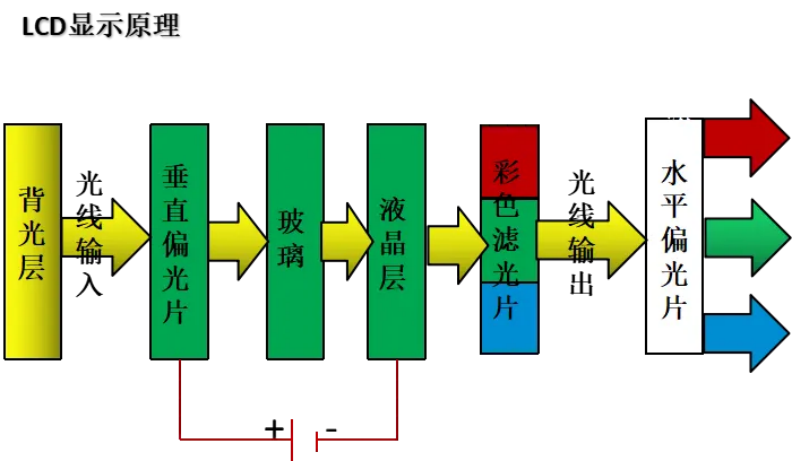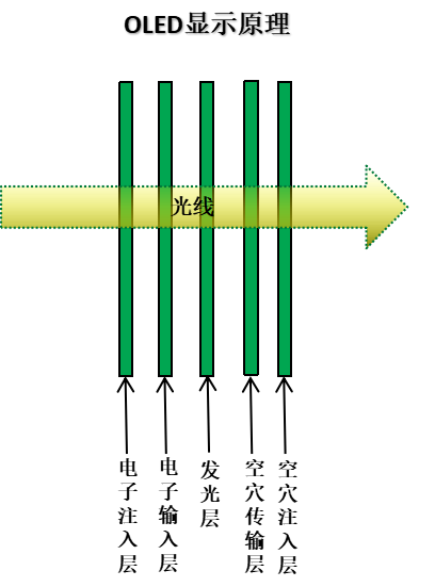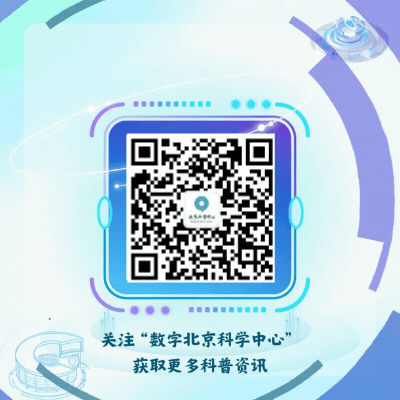Do your eyes feel sore and uncomfortable after looking at your phone for a long time? Did you know that different models of mobile phones have different principles of screen illumination? Choosing a suitable mobile phone screen can more effectively protect your eyes.

As smartphones continue to evolve, the technology behind smartphone screens is also rapidly advancing. Upgrades in refresh rates, resolutions, and dimming techniques are continuously optimizing the mobile display experience. Do you know the differences between various mobile phone screens? Come and see which type your phone belongs to!
01Common Types of Mobile Display Panels
Currently, mainstream mobile screens are mainly divided into two categories, each containing several sub-technologies:
LCD Screens: Liquid Crystal Displays
OLED Screens: Organic Light Emitting Diodes
LCD Screens
LCD screens use a display principle that combines liquid crystal molecules with a backlight layer.The pixels themselves do not emit light but rely on backlight illumination. The angle of rotation of the liquid crystal molecules controls the amount of light passing through, combined with color filters to create color variations.
This type of screen has a stable structure, and it is not prone to ghosting when displaying static images for long periods. It generally uses flicker-free DC dimming, which is more eye-friendly at low brightness.
However, due to the need for stacking the backlight layer and liquid crystal layer, the overall screen is relatively thick and cannot achieve flexible bending. The color performance and viewing angles are usually weaker than self-emitting OLEDs. Since the backlight is always on, even when displaying black, it needs to block light, resulting in relatively limited contrast, and dark details may appear gray.
LCDs are a reliable and flicker-free choice that is friendly to the eyes and suitable for displaying fixed content for long periods, but they are limited in picture quality, image sharpness, and thin design.

Image Source: ZTE Document
Currently, the technology of LCD screens has matured significantly, and their prices are relatively cheaper compared to other materials, leading to higher market share and popularity. We can also understand that LCD screens were the dominant technology in the early mobile screen market.
However, because their illumination relies on backlight refraction, the screens are relatively thick and rigid. To overcome the disadvantages of LCDs, new display screens have been developed: OLED.
OLED Screens
Before introducing OLED screens, let’s first understand the concept of LED.
LED stands for Light Emitting Diode, which is an imaging electronic device capable of emitting light.Light Emitting Diodes are arranged in a sequence of red, green, and blue colors according to their intended use, and when a control signal is applied, they can convert electrical energy into light energy, known as the fourth generation light source. They are widely used in ordinary lighting and other fields, such as traffic lights and decorations.
OLED stands for Organic Light Emitting Diode, which mainly consists of a display unit and light-emitting materials.It is composed of red, green, and blue diodes that can emit light independently, forming independent pixels. These organic materials generate light when driven by current, eliminating the need for additional backlighting.

Image Source: ZTE Document
When displaying black, the corresponding pixels are completely powered off, allowing for pure black and high contrast. This type of screen consumes less power when displaying dark images, as fewer pixels are activated. Its inherent high brightness results in more vibrant colors and greater brightness dynamics.
Additionally, the screen can be made thinner and lighter, using a flexible substrate that supports bending and folding.
However, due to the limited lifespan of organic materials, if a fixed image (such as a status bar icon) is displayed at high brightness for a long time, some sub-pixels may age and produce ghosting, known as “burn-in”; furthermore, at low brightness, adjusting brightness through rapid pixel switching (PWM, or Pulse Width Modulation) may cause eye fatigue.
02What Do Dimming and Flicker Mean?
Dimming is a technology for controlling screen brightness, mainly divided into DC (Direct Current Dimming) and PWM (Pulse Width Modulation Dimming).
In simple terms, the former changes the screen brightness by adjusting the current level, while the latter changes the screen brightness by controlling the on-off time of the screen.
DC Dimming:It directly changes the output intensity of the light source (such as LCD backlight or OLED pixels) by adjusting the current or voltage. When brightness is reduced, all working units (such as LED beads) continue to emit light but become dimmer.
This method is flicker-free, but at low brightness, LCDs may exhibit color deviation or uneven backlighting.
PWM Dimming:It changes brightness by rapidly switching the light source (hundreds to thousands of times per second), utilizing the human eye’s persistence of vision to mix the on-off time ratio (the duty cycle of high and low levels).
For example, at a 1:1 duty cycle, if the screen operates by switching on and off 240 times per second, with 50% of the time powered on (120 times high level, emitting light) and 50% powered off (120 times low level, not emitting light), the perceived brightness is close to half of full brightness.
Flicker is a side effect of PWM dimming.When the screen brightness is reduced, the proportion of “off” time in the switching cycle increases (for example, at low brightness, it may become 80% off and 20% on), making the alternating light source more noticeable.
The human eye’s sensitivity to flicker is related to frequency:
High-frequency PWM (such as above 2000Hz): The human eye can hardly perceive flicker, and the visual experience is smooth;
Low-frequency PWM (such as 240Hz): It is easy to perceive brightness fluctuations, and long-term use may lead to eye strain and fatigue, especially for sensitive individuals.
LCDs typically use DC dimming by default, and only some models may use PWM at very low brightness, but the overall flicker risk is low; OLEDs, due to pixel brightness characteristics, rely on PWM dimming, and high-frequency PWM or DC-like solutions (supported by only some manufacturers) can be used to reduce flicker impact.
03Selection Recommendations
If you have a strong need for eye protection, you can prioritize high-frequency PWM, DC-like OLEDs, or high-quality LCD models, preferably with a blue light filter mode.
If you want a good balance between display quality and eye protection needs, you can choose high-frequency PWM OLEDs and avoid low-brightness scenarios.
The most important thing is: although current technology levels generally adopt high-frequency PWM technology, to protect your eyes, it is still essential to develop good operating habits: reduce use in low-light environments, use auxiliary light to minimize pupil dilation, or enable automatic brightness adjustment, and take regular breaks by closing your eyes.
Source: Digital Beijing Science Center

Editor: Ji Zixi
The reproduced content only represents the author’s views
It does not represent the position of the Institute of Physics, Chinese Academy of Sciences
If you need to reprint, please contact the original public account
Recent Popular Articles Top 10
↓ Click the title to view ↓
1.Is the probability of a birth date covering all digits from 1 to 9 very small? Could it really be a “chosen one”? | No. 448
2.If the shampoo runs out, can you use body wash to wash your hair?
3.Why are Arctic sweet shrimp so popular, while Antarctic krill, which is abundant, is not eaten?
4.What animal is the true identity of the Shengu… Leopard family?
5.This family is full of poison kings, yet they still can’t escape your dining table6.I admit your DeepSeek competition performance is strong, but can my job be replaced…? | Serious Play7.Are there really zombies? Let’s examine this issue from a scientific perspective8.Why can the eyes automatically defocus when daydreaming? | No.4419.The secret to improving high-end quantum devices is actually to place two grapes Click here to view all past popular articles
